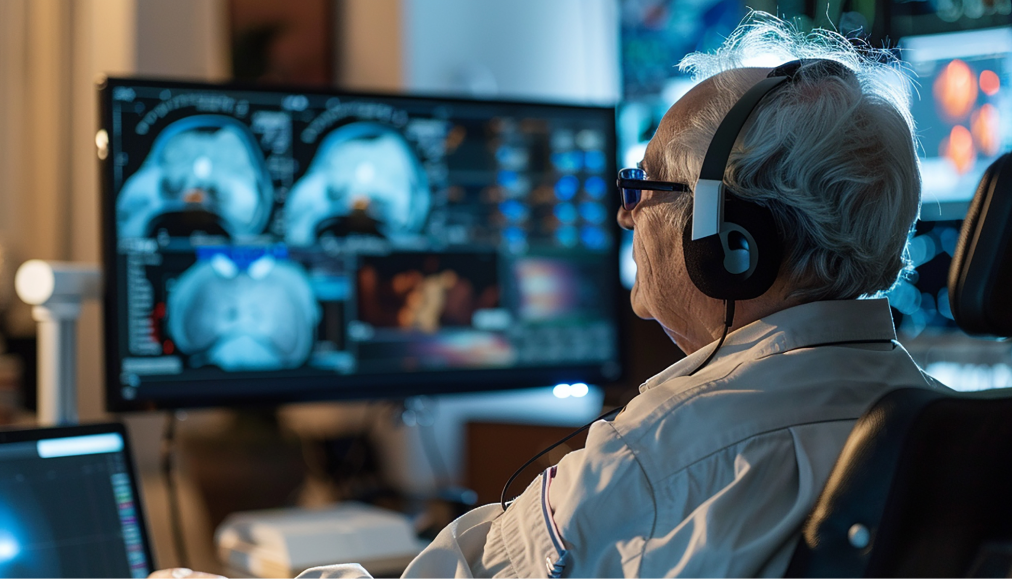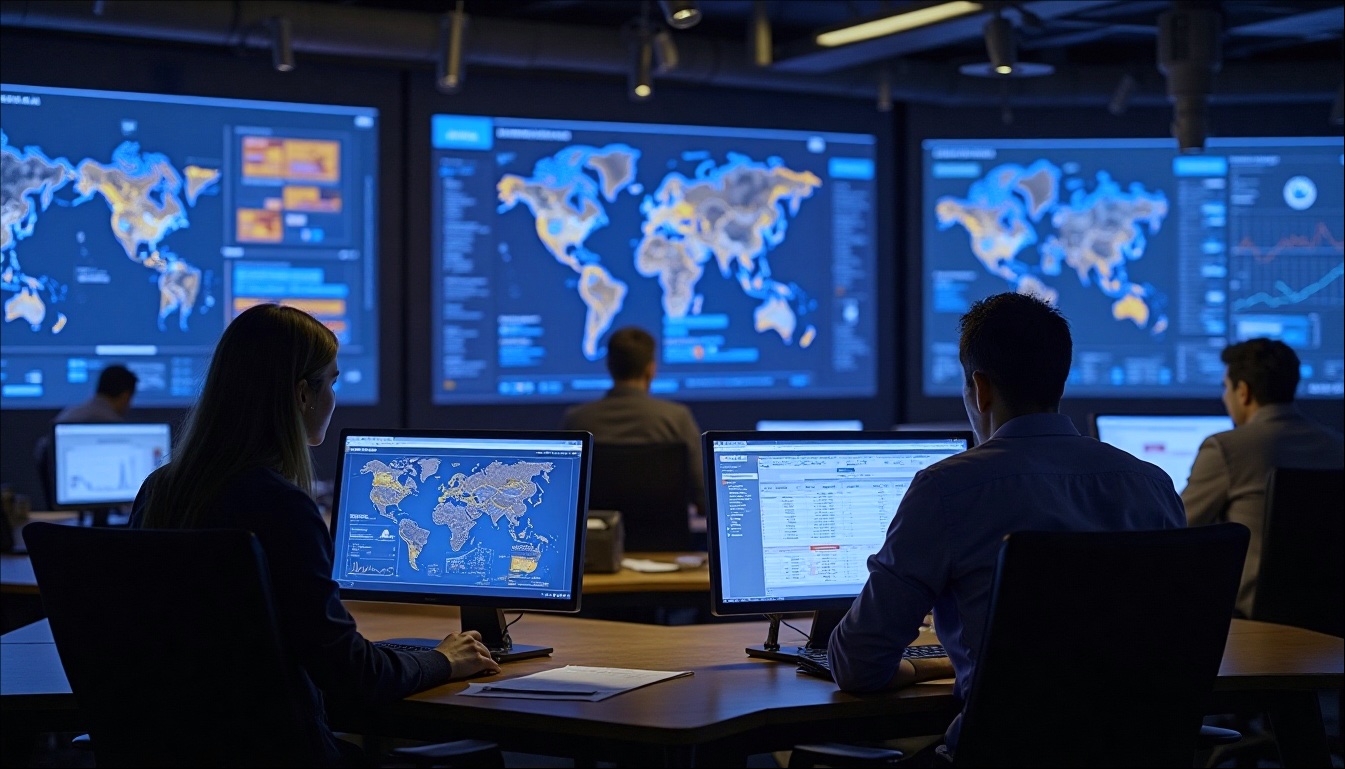Augmented Reality (AR) VS Virtual Reality (VR): How it works Different In Technology & Devices?
Augmented reality and virtual reality are related but diverse. The two recurrently come up in the similar conversations and are often puzzled with one another primarily by the people who are not much informed in the related fields. But the disparity is major and worth clearing up.
They both have the noteworthy ability to change or modify our perception of the world. Where AR and VR differ is the sensitivity of our presence.
As per the Wikipedia, Augmented Reality (AR) is an appealing experience of a real-world environment whereby the items that reside in the real-world are “augmented” by digitally-generated perceptual information, across sensory modalities, which includes visual, auditory, haptic and somatosensory.
On the other hand, Virtual Reality (VR) is able to rearrange the users and put them someplace else. By utilizing closed visors or goggles, VR blocks out the involved room and puts our occurrence elsewhere.
In this way, augmented reality modifies one’s current perception of a real-world environment, whereas virtual reality entirely replaces the user’s real-world environment with a virtual one.
Both are gaining a lot of media consideration and are promising remarkable growth. So what is the dissimilarity between virtual reality vs. augmented reality? Let’s start explaining both individually and then later talk about their differences.
What is Augmented Reality?
Augmented reality (AR) is a technology that levels computer-generated augmentation on a live reality in order to make it more consequential. It enables the capacity to network with it.
AR is developed into mobile apps and used on smartphone devices to merge digital components into the real-world. It is done in such a way that they boost one another; however, they can, in addition, be handled separately.
AR technology is swiftly coming into the mainstream. It is used to exhibit score overlays on telecasted sports games and pops out 3D emails, pictures or text messages on diverse mobile devices. The technology leaders are using AR to do remarkable and ground-breaking stuff by utilizing holograms and motion-activated commands.
What is Virtual Reality?
Virtual reality (VR) is an artificial, computer-generated recreation or delight of real-life surroundings or circumstances. It submerges the user by making them feel like they are present in the simulated reality personally, largely by thought-provoking their vision and hearing.
VR is characteristically achieved by wearing a headset like Facebook’s Oculus capable of integrating with the technology, and is used outstandingly in two different ways:
- To produce and develop an imaginary reality for entertainment and gaming.
- To improve training for real-life environments by generating a simulation of reality where people can run through beforehand like flight simulators for pilot training.
Virtual reality is realizable by a coding language acknowledged as Virtual Reality Modeling Language (VRML) which can be utilized to generate a sequence of images and spell out what types of interactions are achievable for them.
How AR and VR Work in Different Domains?
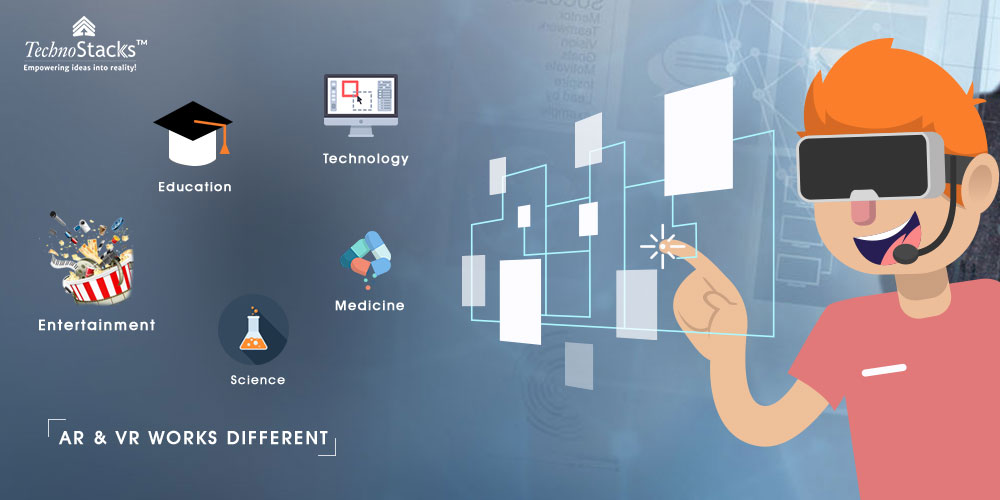
It is not forever virtual reality vs. augmented reality, they even operate together. They often blend to create immersing experiences. Alone or merged jointly, they are unquestionably opening up global options for both real and virtual alike.
-
- Technology
Augmented and virtual realities both influence similar types or categories of technology, and they each survive to give out the user with an improved or enriched experience.
Diverse companies have created various technologies for Augmented Reality and Virtual Reality platforms and devices. They support a different range of custom project development. The technology engines they support include gesture recognition, video conferencing platforms, mobile augmented reality and geolocation solutions.
-
- Education
Augmented reality and virtual reality in education industry can be used for generating Virtual Learning Environments (VLE), feedback tracking, 3D objects and motion capture applications.
As an instance, using these technologies a castle or a temple can be regenerated in a 3D environment and that it is feasible to walk through it as a factual surround setting without going out of the classroom. Other examples include building an entire Italian or roman centurion house, with rooms, and figuring its views from different angles.
Watching yourself attired as an Italian or a Roman, while all the fabric accompanies your movements; stirring to wherever in the world. Have a feel of the different range of temperatures or a leisurely walk along the ocean floor enclosed by cephalopods or watching an absolute heart beating in the center of a classroom. These are just some of the potentials that these technologies enable to the education world.
-
- Entertainment
Both technologies facilitate experiences that are fetching more commonly accepted and advanced purposes for the entertainment industry. While in the history they appeared simply a fantasy of a science fiction imagination are now attainable. The new and innovative artificial worlds come into existence under the user’s management, and deeper layers of communication with the real-world are viable.
Leading technology entrepreneurs are empowering and developing novel adaptations, enhancements, and launching more and more products and mobile apps that support these technologies for the progressively more savvy users.
-
- Science and Medicine
In addition, both virtual and augmented realities have great standpoint in altering the landscape of the medical field by building things such as remote surgeries which is a legitimate option. These technologies have previously been used to take care of and cure psychological conditions which include Post Traumatic Stress Disorder (PTSD).
How do AR and VR be at Variance in Intentional Functioning?
-
- Intention
With augmented reality, you can bump up experiences by using virtual components. These experiences include stuff like digital graphics, images, and sensations as a new layer of interface with the real-world.
Contrastingly, virtual reality constructs its reality that is entirely computer generated and advance technology driven.
-
- Delivery Method
Virtual Reality is more often than not delivered to the user throughout a head-mounted or hand-held controller. This equipment unites people to the virtual reality and permits them to organize and navigate their actions in a background meant to replicate the real-world.
Augmented reality is being utilized more in advanced devices such as smartphones, laptops, and tablets to alter how the real-world and digital graphics with images interconnect and interrelate.
Difference between Augmented and Virtual Reality Devices
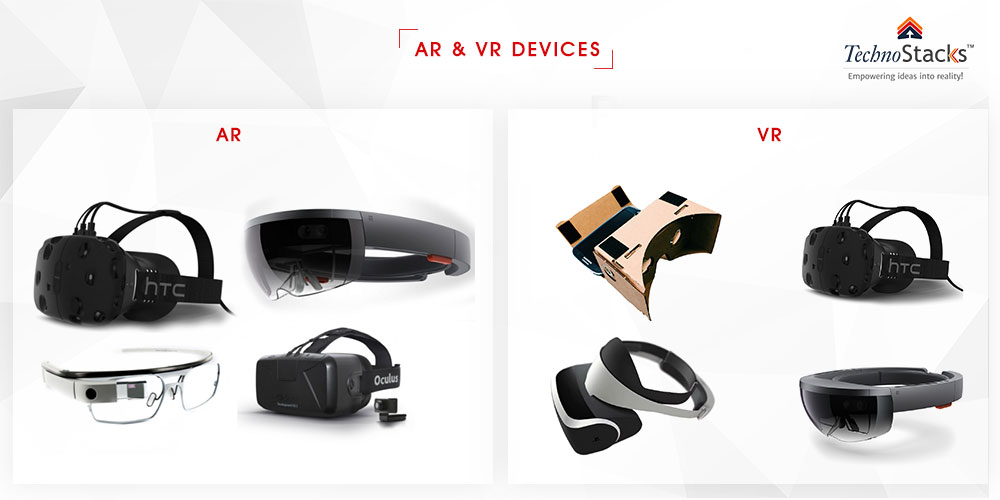
There are several AR/VR devices on the market, together with tablets, headsets, smartphones, wearable and the consoles. Every device offers a poles apart level of experience transversely the reality spectrum but also has particular limitations in relation to augmented reality and virtual reality examples.
A lot of the virtual reality headsets depend on smartphones to exhibit the content. While these devices are a better introduction to VR, they are deficient in the visual quality to provide an in-depth user experience. Headsets tend to be huge as well, making drawn out usage improbable.
Types of Augmented Reality Apps and Examples of their Practice Different than VR
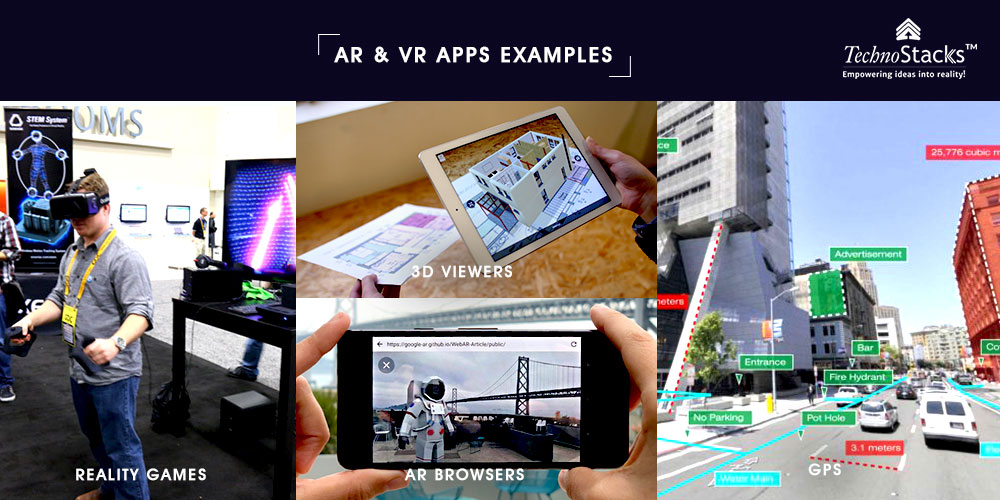
-
- AR in 3D Viewers
This enables users to put life-size 3D models in their background with or without the utilization of trackers. Trackers are the straightforward images that 3D models can be correlated to in Augmented Reality.
-
- AR in Browsers
The AR browsers can better enhance user’s camera display with relative information. For example, when you point your smartphone at a structure, you can perceive its history or sketchy value.
-
- AR in Reality Games
AR Gaming software is in all probability the most widespread form of App. These apps produce compelling gaming experiences that use your authentic surroundings.
Examples are Pokémon Go, Temple Treasure Hunt, Parallel Kingdom, Real Strike, Zombie Go and more.
-
- AR with Global Positioning System (GPS)
AR applications in smartphones, by and large, include Global Positioning System (GPS) to mark the user’s location and its range to identify device orientation.
Examples: AR GPS Drive/Walk Navigation, AR GPS Compass Map 3D and more.
Different Virtual Reality Examples, Use Cases & Case Studies
-
- VOLVO Reality
A foremost car brand, Volvo came up with an inventive way to make the utilization of Google Cardboard. They worked on a wide-range campaign wherein they endorsed the users to submerge themselves in an astounding mountain drive all with the functioning of Virtual Reality.
The Virtual Reality programme taken by Volvo assisted them in achieving a million impressions and got published in both online and offline media.
-
- Matterport 3D Spaces
Contribution to exclusive 3D experiences in the real state segment, Matter port used Virtual Reality and 3D in the finest way possible. It’s a totally new form of immersive media invites users to take tours in virtual environments and discover places as if they were in actuality.
-
- King’s College, London
The potentials of science, health, and medicine sectors have expanded appreciably and with Virtual Reality coming into control, these industries are finding steady ways to perk up. The King’s College Clinical Research facilities use their innovative Virtual Reality Lab for curing patients anguishing from Bipolar Disorder. The lab makes use of motion sensors that permit the user to walk through a virtual setting that will activate the patient for a picky reaction.
-
- Tribeca Immersive
Formerly Virtual Reality was an entirely a gaming trend. However, VR is now finding its accomplishments in all sorts of industries which include Entertainment. Tribeca Film Festival along with their Tribeca Immersive has in fact created a major contribution in the entertainment space. With its Virtual Arcade, the guests can sign up for projects they want to observe all through the three hour ticketed session.
In addition, Tribeca Cinema360 will enable users to observe 360-degree mobile VR content in a cinema set-up.
What is AR vs. VR Future Perspectives in Terms of Devices?
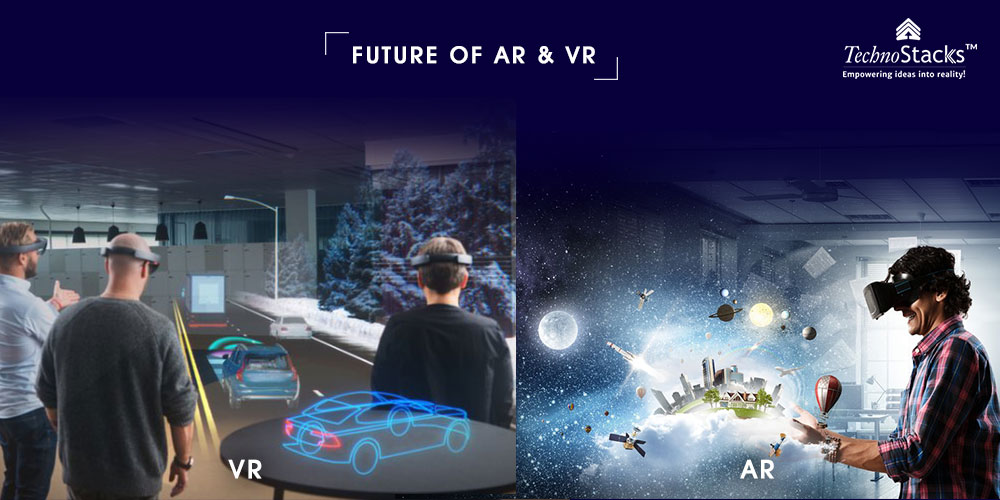
The questions about the future technologies as well as devices comprise of their advancements with augmented and virtual reality. What if we could spot from end to end the screens we are encircled by each day?
I think both technologies will merge and come in two forms in the future which constitute tethered systems and standalone units. Tethered systems will be encompassing of a wearable on the head, with a wire attached to a processing unit. The standalone units will comprise of all the combined systems starting right from display to the processing inside the unit and be accessible as a wearable.
We are already attaining in the early hour’s signs of these trends as manufacturers pick a mixture amid standalone and tethered units. Even though some standalone units are by now available, these devices are more multifaceted and not easy to implement.
Why are we in the State of Compromise?
Today, we are implementing partial engagements and are in a state of compromise with both augmented and virtual reality devices. Nobody of the dynamic systems provide users an absolute, boundless and in-depth experience. Most of the systems are short of a natural, wide field of view (FOV), have restricted display resolution, stumpy brightness and undersized battery life as well being deficient in 3D sensing. It will take some more time to launch end to end devices with unconstrained AR/VR applications.
The AR/VR devices of the future should be highly personalized, easy to get to and can involve advanced technology experiences. As these essentials take hold, a platform shift is forthcoming with many devices turning up in the coming future for AR and VR to become an option to the current technologies working on smartphones.
Moving Forward: Companies Planning for the Future Opportunities with AR and VR
Although we have an inspiration of where the AR and VR market is heading, product companies, by and large, seem limited in developing their future plans. As per research, 52 % of companies haven’t even underway developed a primary plan. Out of those with AR/VR future plans, 98 % say their plans are stretchy to alter with the market. Given the unpredictability of the AR/VR marketplaces so far, some of the companies may be still waiting to do something.
The larger organizations may think about partnering with skilled vendors to productively conquer the challenges caught up with structuring out augmented and virtual reality technologies. This tactic will empower these organizations in keeping up with the latest market outlook, expected ROI and time-to-market. These organizations would even like to partner with proficient or strong start-up technology firms possessing wide-ranging engineering capabilities to offer end-to-end product development with some of the calculated investment risks.
Conclusion:-
We hope you are now aware of the differences between Virtual Reality and Augmented Reality.
What’s your thought for AR & VR?.
You can comment below to share your idea.



